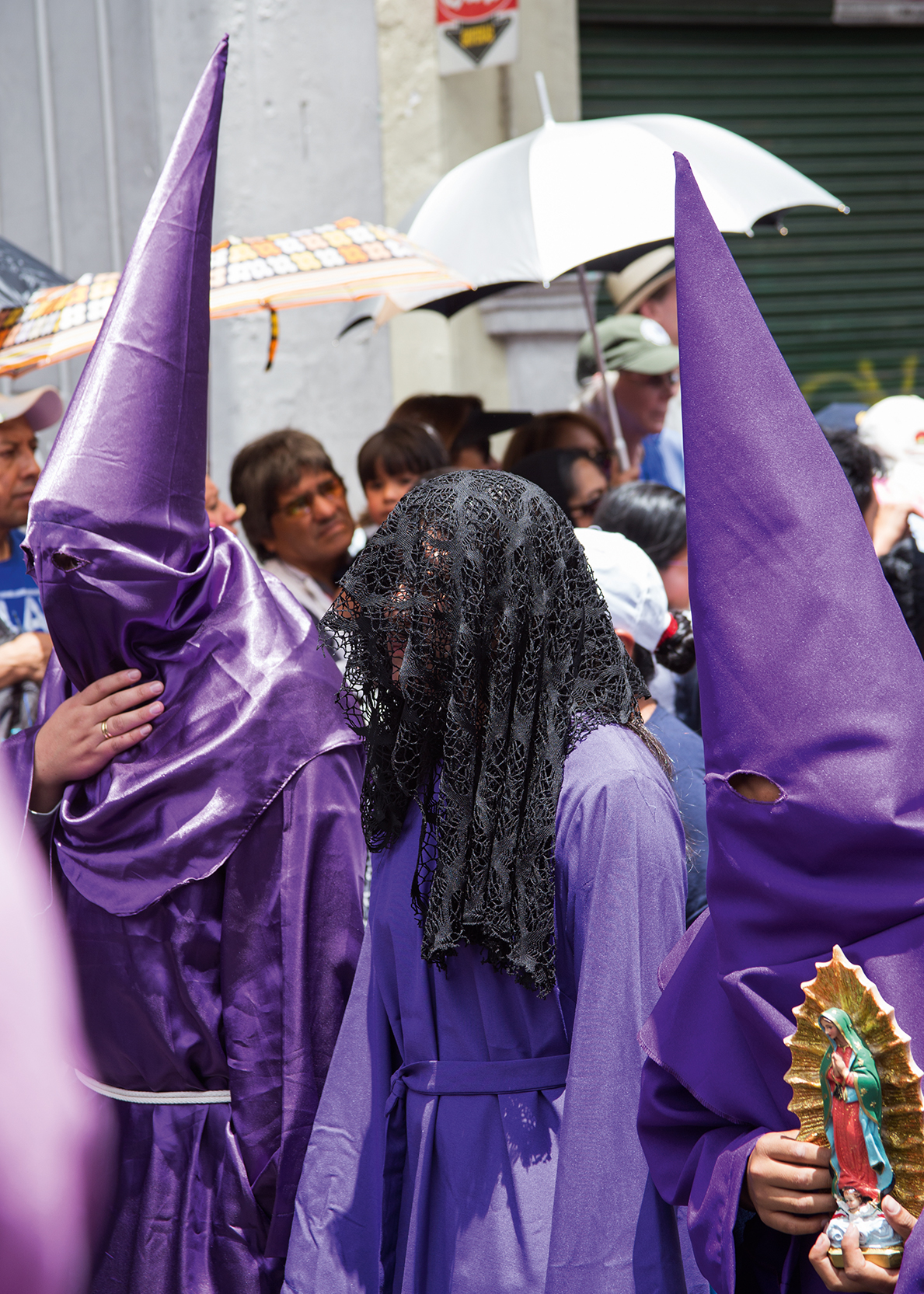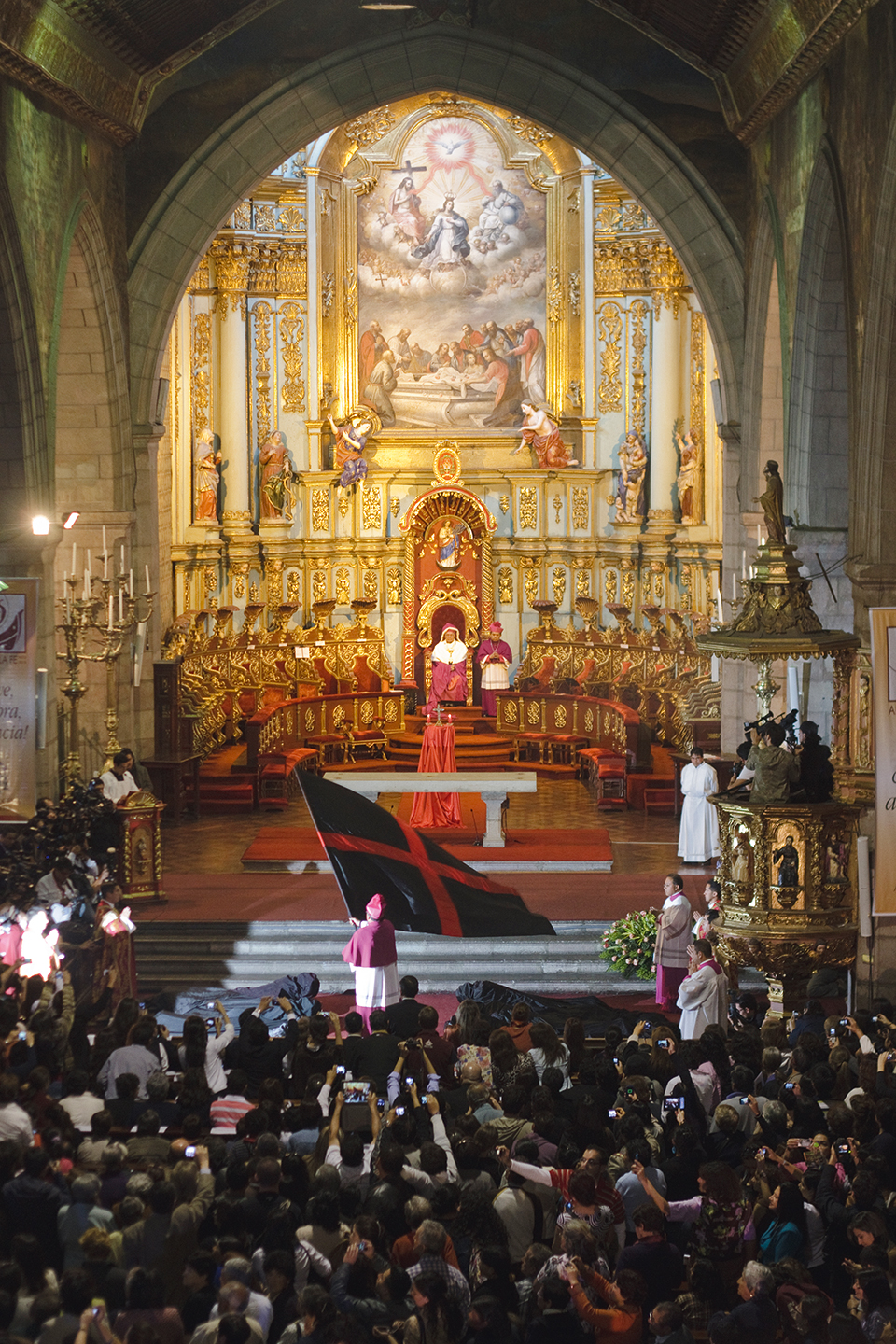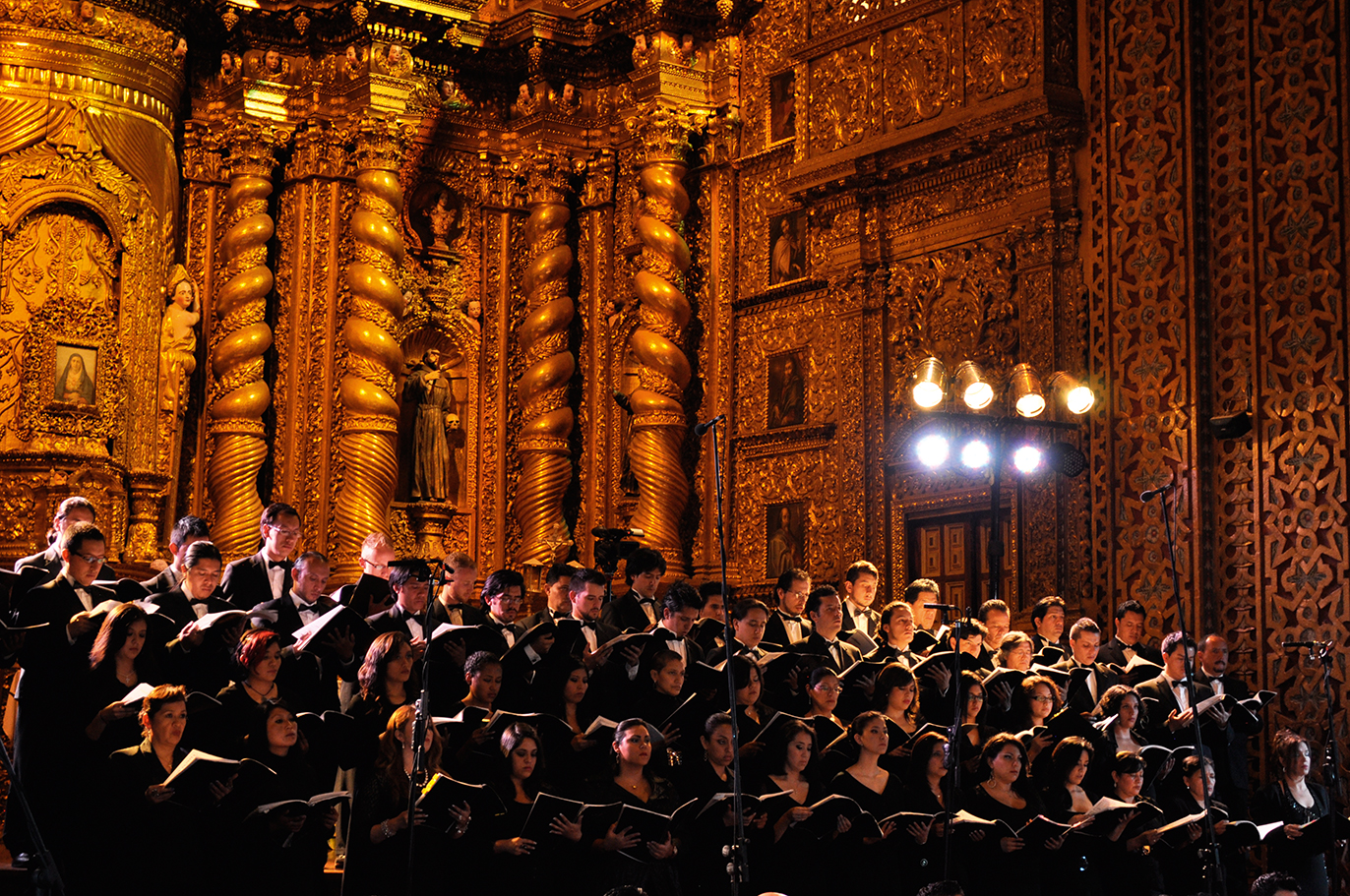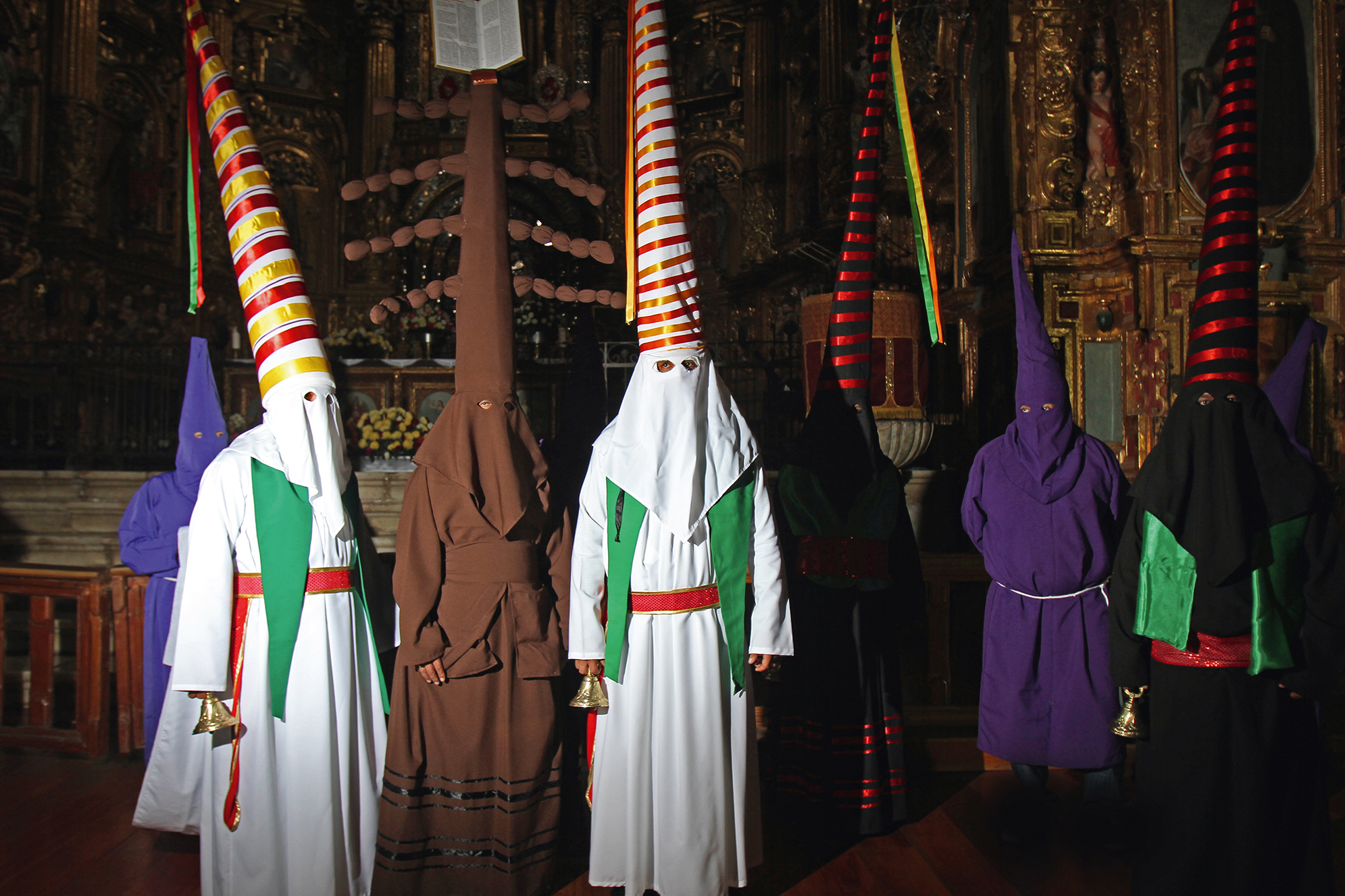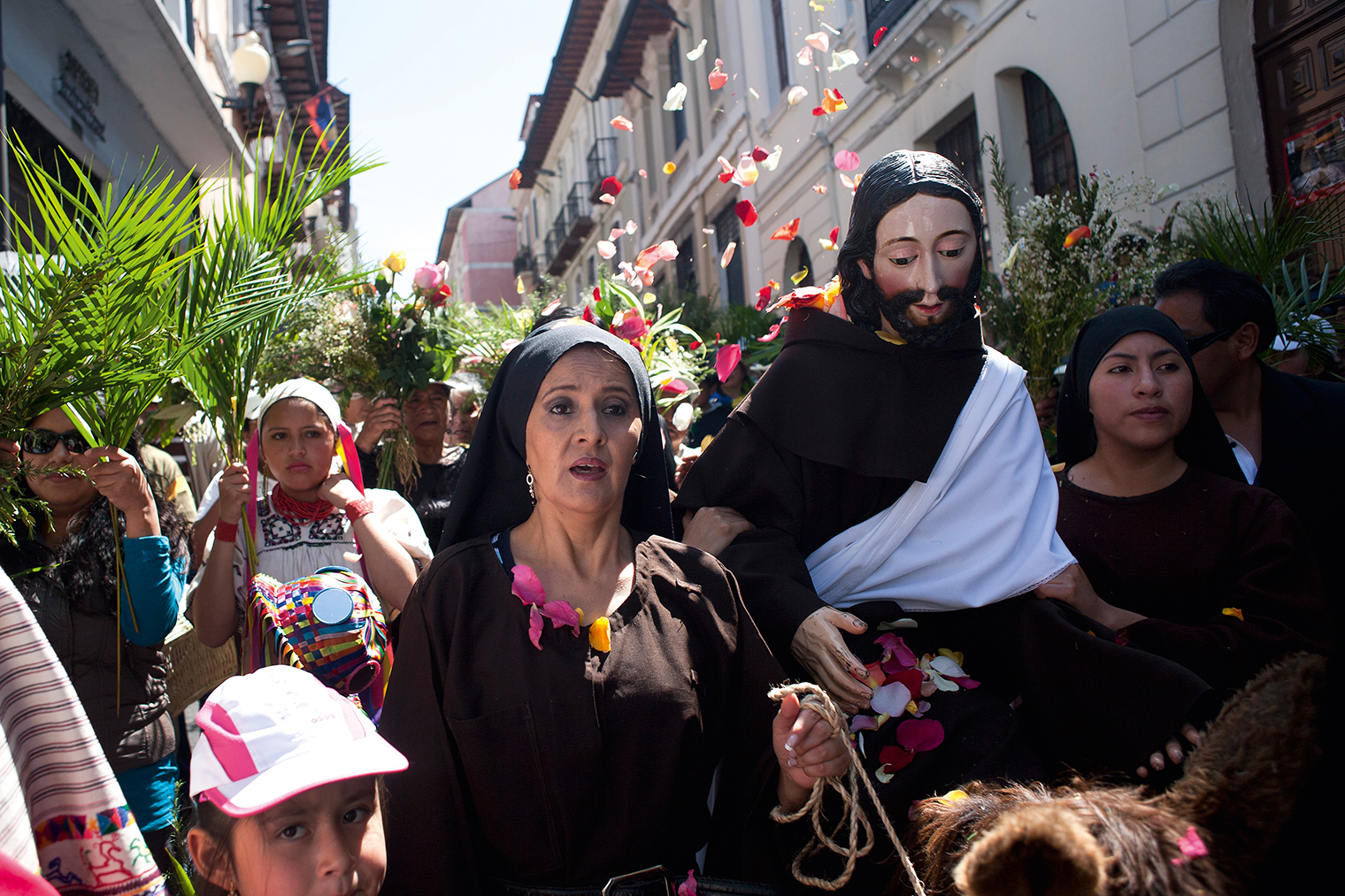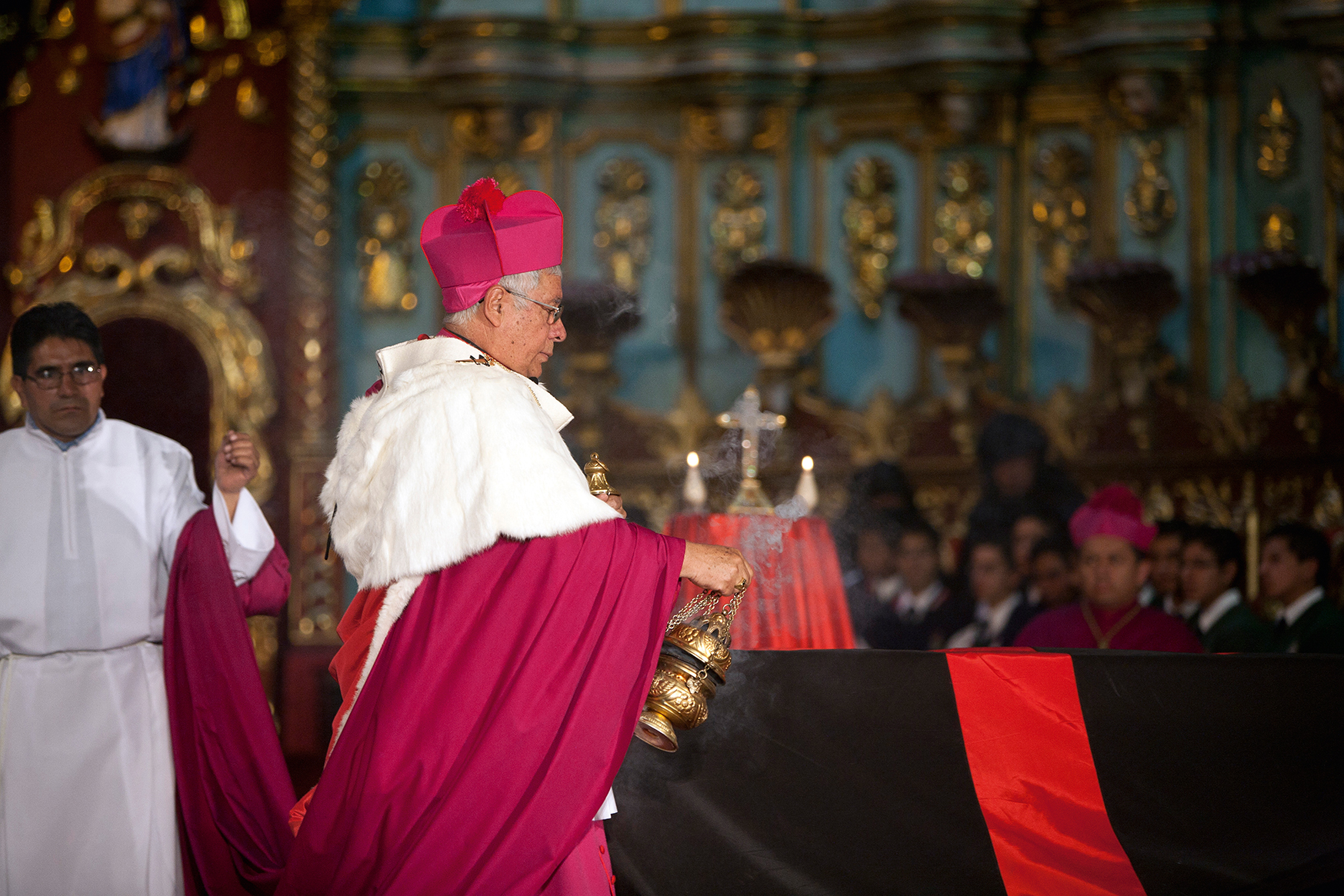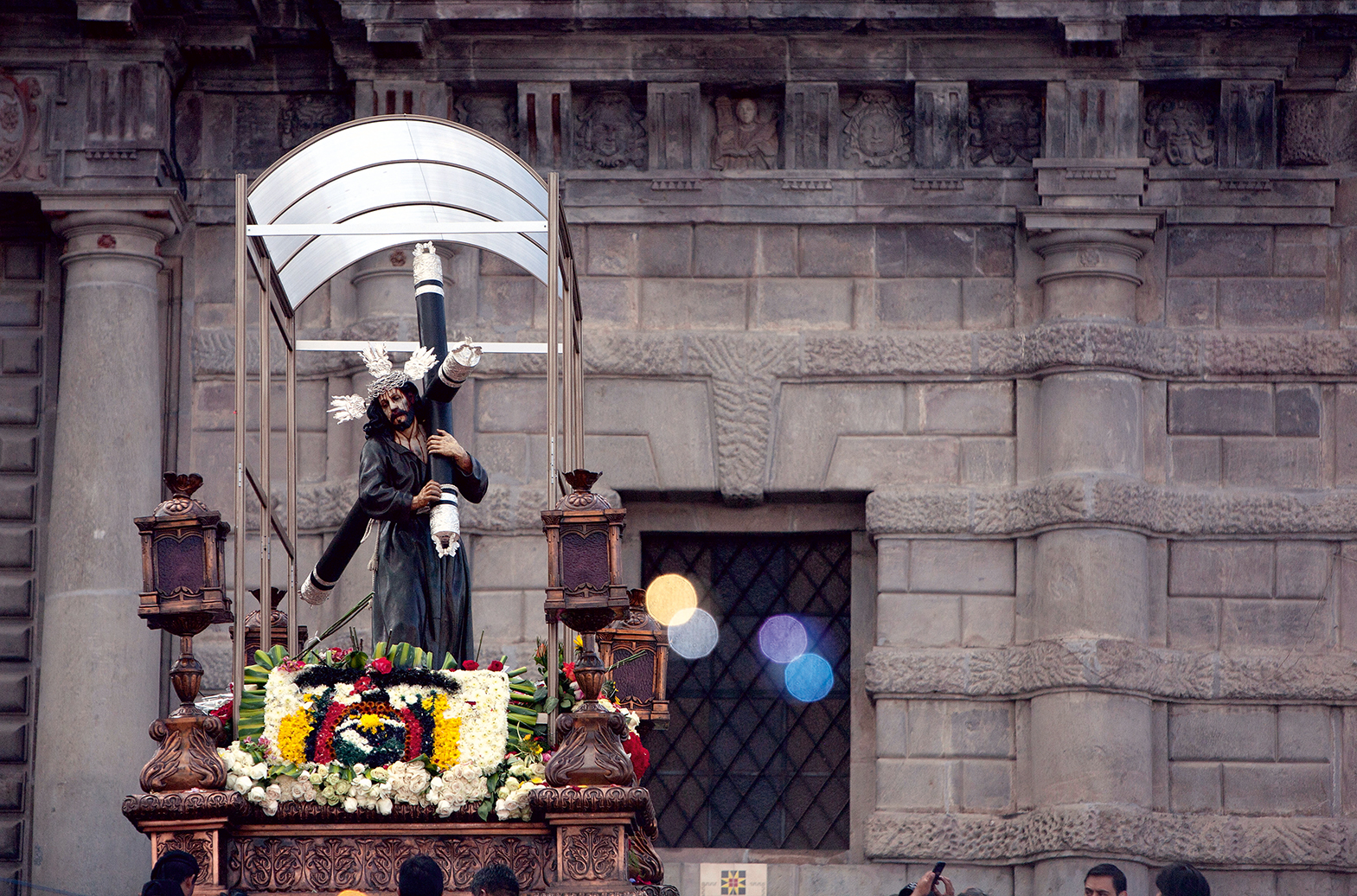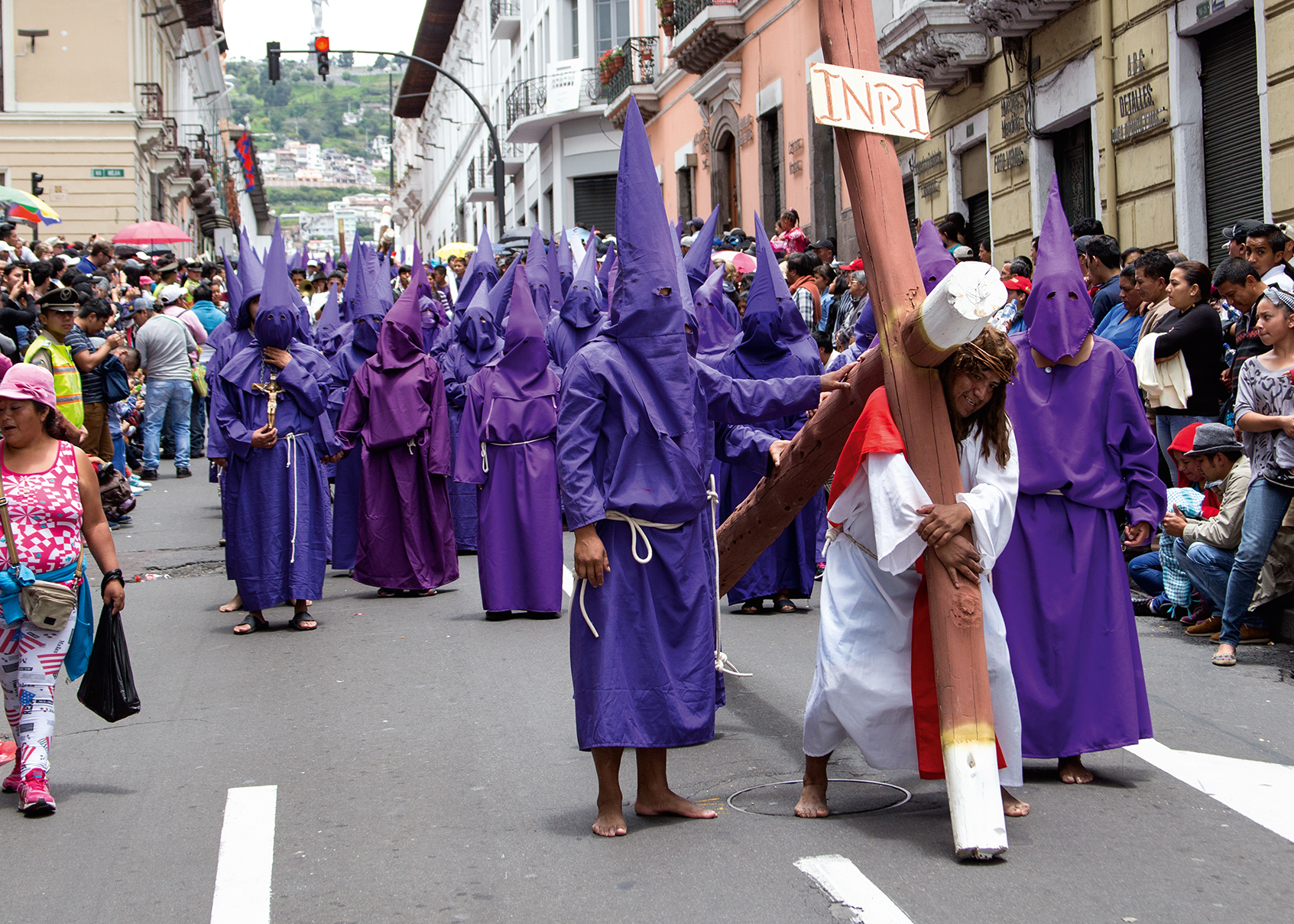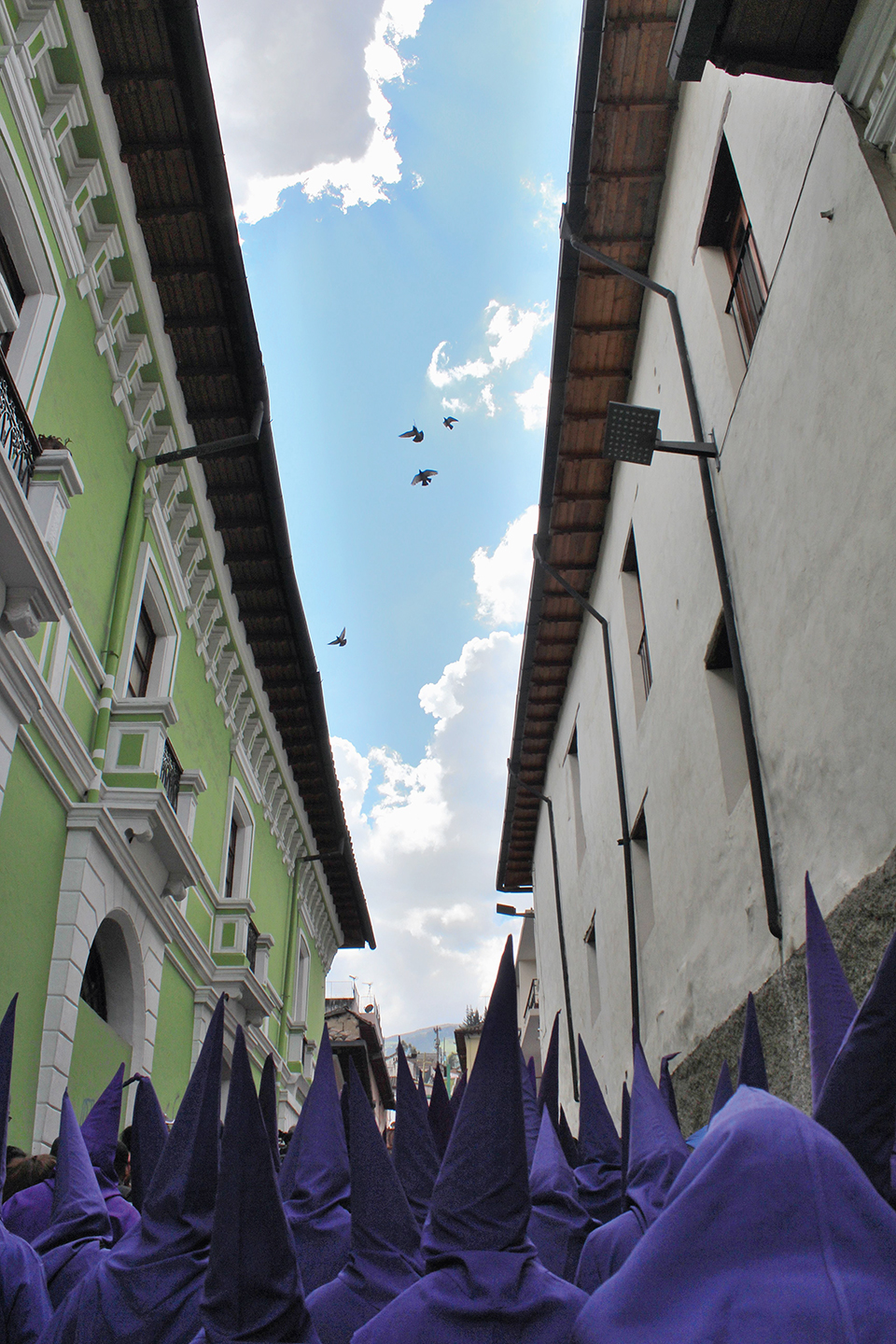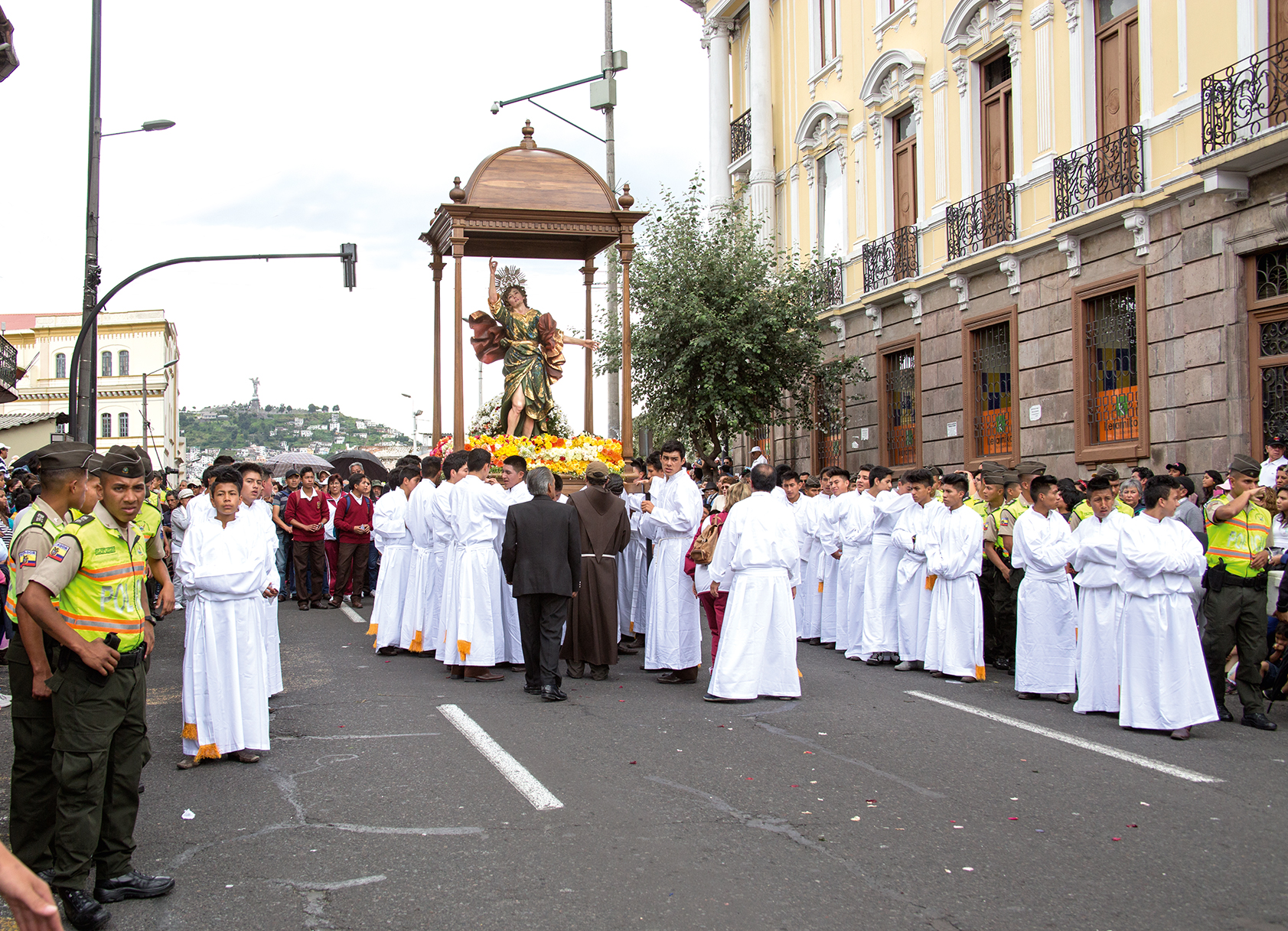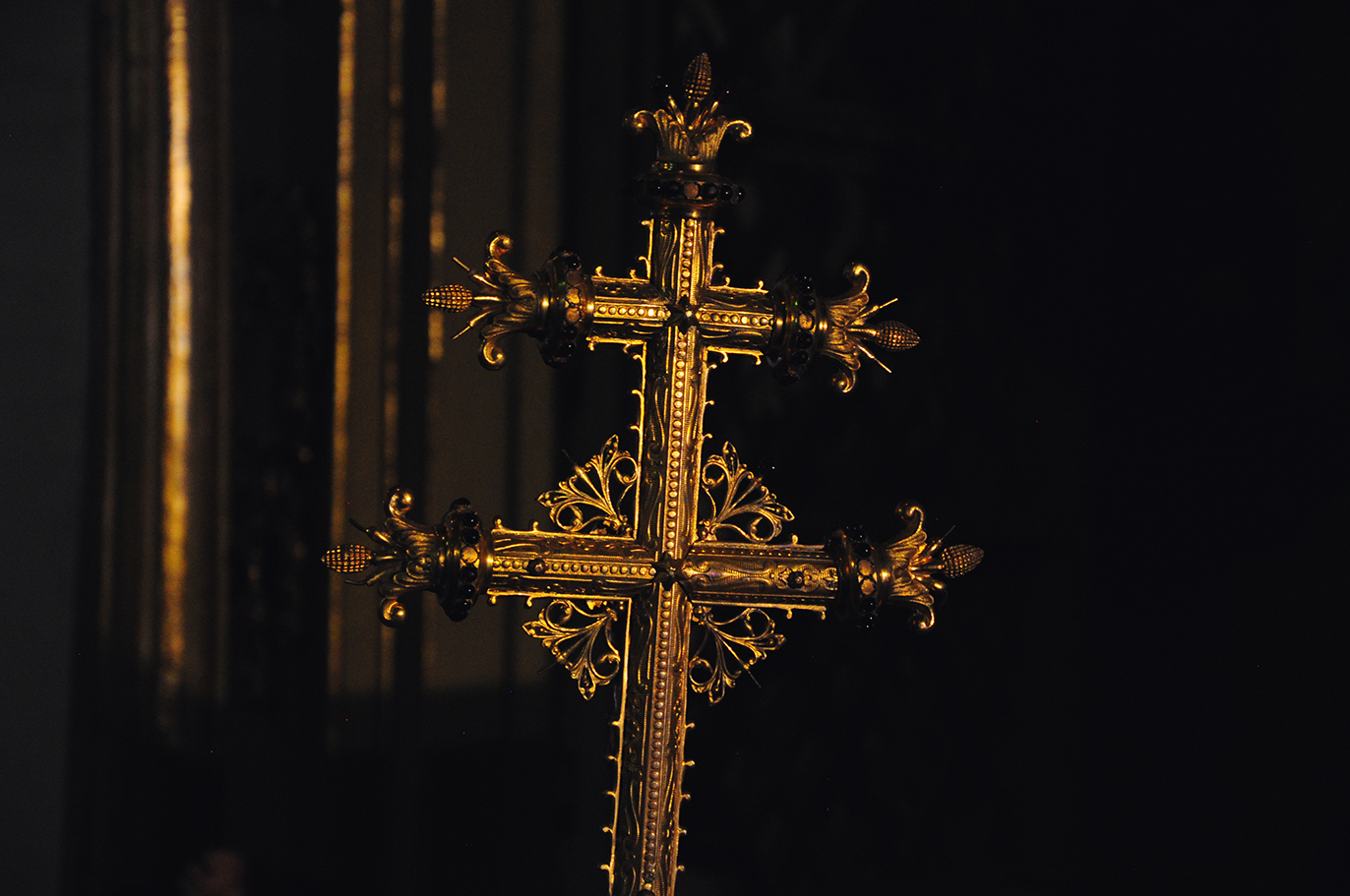Sinners, martyrs, “cucuruchos” (hooded persons carrying heavy chains and crosses during Catholic processions) and the faithful will parade down the streets of Quito in an experience that draws together the spiritual with the picturesque. The scenario, Quito´s colonial downtown. The event, Holy Week. The relevance in terms of the intensity of faith and devotion is huge. The attraction for tourists is greater each day. It´s an opportune time to refresh our memories regarding the events that the Catholic religion recalls during those days. For this purpose, we have sought a good friend of this publication, Father Roberto Fernández, who writes for our readers on the true meaning of Holy Week.
It´s the commemoration of the drama of our salvation, as told by the four Evangelists and displayed every year for the eyes and ears of the faithful who seek new knowledge of the Faith, by participating in the liturgy whereby the Church celebrates Christ dead and risen.
In Saint Thomas´ words, man cannot understand without images, because there is nothing in the brain that wasn´t previously in our senses (Aristotle). Therefore, the importance of feeling, touching, seeing and listening to the mysteries of the Faith in the symbols of the ceremonies of Holy Week that begin on Palm Sunday and culminate in the Paschal Triduum, that is, Thursday, Friday and Saturday, three holy days that lead us to the exaltation of the Resurrection during the vigil of Easter Sunday.
For this reason, the theological saying fides ex auditu, in other words, Faith enters through our ears. How important then the Holy Scriptures, which convey the History of Salvation and strengthen the theological efforts to express rationally that information revealed via the practice of Faith. And which also inspire the preaching of the Church which was sent by Jesus, “in order to make disciples of all the peoples and baptize them in the name of the Father, the Son and the Holy Ghost” (Matthew 28,18).
The master story of the Passion, Death and Resurrection of Christ is the nucleus of the New Testament. The Risen is he who had to suffer and die, according to the Scriptures, and also the same one who was born of the Virgin Mary, according to the prophet Isaiah 9, 14. These facts, inspired by God to the holy writers, have transcended the formal borders of liturgy and have stoked creativity in popular art as well as in academic art. Gabriel Miró in the Figures of the Passion of the Lord; Passolini and Mel Gibson who evoke on screen the same drama; Mozart, Bach or Handel in classical music; or Velázquez´s Christ Crucified, contribute with their esthetic truth to our personal understanding of the mystery of Jesus. Nevertheless, nothing can replace the private experience of reading and re-reading these three pages that render witness to the Passion and Resurrection of our Lord Jesus Christ.
In the Church´s calendar, Holy Week begins on Palm Sunday with Jesus´ triumphal entrance into Jerusalem (John 12, 12). On that day, there is a procession where the priest represents Christ and the faithful represent the inhabitants of Jerusalem and the pilgrims that had arrived to the Holy City. There they welcomed Jesus, with festive bouquets and words of benediction, “Blessed is he who comes in the name of the Lord”.
Monday, Tuesday and Wednesday are dedicated to meditation, to the celebration of the Eucharist, to confession and various acts of devotion and penance. Among the most common practices are the viacrucis (Stations of the Cross) and painful mysteries of the Rosary. Each church tends to have certain local traditions according to their own history.
Holy Thursday is the day of fraternal love and it´s commemorated in two grand celebrations. In the morning, the Chrism mass that gathers the Bishop with the priests and deacons in a solemn celebration inside the Cathedral, together with the faithful. It´s the day that Jesus instituted the priesthood: “As our Father sent me, thus I also send you” (John 20, 20). In the afternoon, the mass of the Eucharist, the sacrament in the presence of the Lord that makes possible an I-Thou relationship with Jesus Christ. It´s called communion for three reasons: it joins us with God, it joins us among ourselves and it joins us with those who are already in the presence of the Lord. Extremely important to receive communion that afternoon.
Holy Friday commemorates the death of our Lord Jesus Christ and we celebrate by proclaiming the Passion according to Saint John. We worship the True Cross and gift a donation for the care and needs of the Holy Land. The ceremony ends with holy communion. The sermon usually recalls the words of Our Lord from the cross. We tremble upon hearing Jesus repeat the 22nd psalm: “My God, My God, why have you forsaken me?” (Matthew 15, 33). We gain comfort from thinking that Jesus did not die alone. He had his Mother and some friends who took Him down from the cross and buried him.
Holy Saturday reminds us that Jesus was buried. The Church, around the world, meditates on His death and prepares the most important Christian celebration, the Resurrection of Our Lord.
Easter Vigil is synthesized in the phrase: “The Lord is risen”. It comprises four great moments: the liturgy of fire, the Word, the water and the Eucharist. Christ is the Light that never fails and that shall shine forever, illuminating our lives and our paths. He had already said in prophecy: “When I am lifted up on the earth, I will draw all men to me” (John 22, 30), and confirmed by Saint John, “They will look at the one whom they have pierced” (John 19, 37). Happy evening and happy sorrow worthy of the Redeemer, as is sung in the exultet hymn.
“The New Testament is the understanding that Christians have had regarding the Old one. Because the New is nothing but the experience of Christ lived by the first Christians as they interpreted the Old: that scripture completes the first one and crowns it” (Pierre Benoit, Passion and Resurrection of the Lord, Madrid, ediciones Fax, 1971, page 363). In the words of this Dominican sage who, for many years, was the Director of the Bible School in Jerusalem, the historical Christ is inseparably joined with the Christ of faith, He who accompanies his Church to this day, as He promised when He said: “I will be with you every day until the end of the world” (Matthew 28, 20) and who continues to warm our hearts when listening to the Holy Scriptures and when sharing the bread of the Eucharist (Luke 24, 32).
